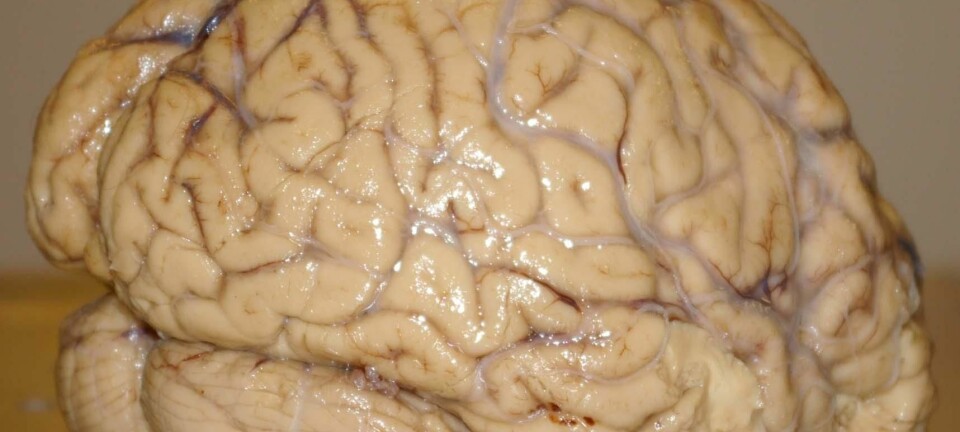
Hot brains impair athletic performance
It’s not just muscle fatigue that impairs athletic performance in hot conditions. Your brain temperature and central fatigue also play a key role.
German cycling pro Tony Martin is pictured on the right wearing an ice vest while he’s warming up on his bike. How’s that supposed to make sense, you might ask.
Keeping cool while ’warming up’ is actually a good idea. In recent years, research into fatigue mechanisms and the body’s reactions to heat has shown that if the body core overheats (known as hyperthermia), it may aggravate ‘central fatigue’.
When the nervous system wears out
Central fatigue is a form of performance impairment that affects the nervous system (the brain) rather than the muscles. When central fatigue develops, the brain becomes unable to send enough signals to the muscles to maintain optimal muscle activation, and that will eventually impair performance.
Central fatigue can arise if the brain becomes overheated. The brain temperature depends on the metabolic rate of the brain and the amount of heat entering versus leaving the brain via the cerebral perfusion.
The optimum is to cool down the body core directly, for instance by consuming ice before and during warm-up or by using an ice vest like Tony Martin does. This warms up the muscles, without the core body temperature increasing too much.
Thus, the brain is dependent on the temperature of the arterial blood entering the brain
But when the body core temperature rises, either as a result of the ambient temperature or due to hard physical work, the blood temperature increases, and that disables the brain’s cooling system.
A hot brain leads to a fatigued body
One scientist who has worked intensely to identify the mechanisms behind central fatigue is Professor Lars Nybo of the Department of Exercise and Sport Sciences at Copenhagen University.
“We started out by noticing that when athletes became exhausted in hot conditions, it wasn’t directly related to muscle fatigue,” he says. “So we asked ourselves what the real cause might be, and we conducted a series of studies in which we demonstrated that the fatigue was a result of fatigue in the central nervous system rather than in the muscles.
"As a scientist, the obvious next question is which mechanisms are involved. We have looked at factors such as brain metabolism and blood flow, but we haven’t managed to pinpoint a specific function or substance as the cause. We therefore conclude that it’s probably the brain’s own temperature that causes central fatigue.”
Danish researchers assist Olympic cyclists
This knowledge has also been used in practice, for instance as an aid to Danish cyclists (Team Denmark) at the Beijing Olympics in 2008.
”When central fatigue kicks in, the brain becomes unable to sustain the necessary levels of signals to the body for more than a couple of minutes,” he says.
“So athletes who need to perform for longer than 6-10 minutes should avoid conditions where the brain becomes overheated – but how? That’s something we’ve helped Team Denmark figure out.”
Part of the answer lies in limiting the intensity of the warm-up. That, however, poses a dilemma, as the athletes wish to increase their muscle temperature during their warm-up, but doing so heats up the body core.
“It’s necessary to cool down the brain, but how can we do that optimally when the body’s natural cooling system is out of order?” he asks.
“The optimum is to cool down the body core directly, for instance by consuming ice before and during warm-up or by using an ice vest like Tony Martin does. This warms up the muscles, without the core body temperature increasing too much.”
London is less risky
Due to the extreme heat at the Beijing Olympics, the risk of central fatigue was particularly high. At the London Olympics the risk is significantly lower.
“In Beijing we saw that e.g. the rowers wore cooling vests to avoid getting too hot before the start. In London, it’s mainly the endurance athletes who benefit from cooling down their bodies core during warm-up,” says the professor.
He adds that today scientists know that ‘warming up’ is more about starting up the relevant muscles than simply warming up the body. And that’s why it’s important to avoid unnecessary warming up of the body.
What happens to the athlete?
An athlete who experiences central fatigue during a race will find that it’s impossible to keep up the pace.
If central fatigue kicks in, he explains, even the best-trained athlete with maximum willpower is rendered helpless. As the brain gets warmer and central fatigue kicks in, the brain starts sending inhibitory signals from the hypothalamus. These signals inhibit the activation signals that other parts of the brain are sending out to the muscles.
“So the brain transmits fewer signals to the muscles, and some of them become inhibited by other signals. This means that even if the athlete tries, there’s nothing he or she can do.”
Hot conditions are not dangerous
Nielsen and his colleagues have also studied whether it’s directly harmful for the athletes to engage in their sports when it’s as hot as it was in the Beijing Olympics, where temperatures could easily reach 40 degrees Celsius in the shade.
They have carried out a study with researchers in Qatar, where they tested whether central fatigue is harmful per se.
“We asked a team of footballers to play a game while the temperature was at 43 degrees Celsius, and we were able to demonstrate that the players ran less and became more fatigued, but that it’s not directly harmful,” says Nybo.
At the Beijing Olympics, additional breaks were added to the football games because the players became fatigued and the arrangers worried that the heat might be harmful to the players. But that’s not the case, the researchers are keen to point out.
“The heat impairs the ability to perform due to overheating of the brain, which causes central fatigue, but it’s not dangerous,” he says.
There can be no doubt that the athletes in this video are experiencing peripheral as well as central fatigue as they’re crawling across the finishing line.
----------------------------------------
Read the Danish version of this article at videnskab.dk
Translated by: Dann Vinther






